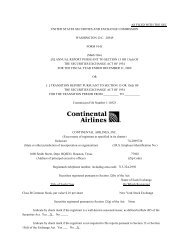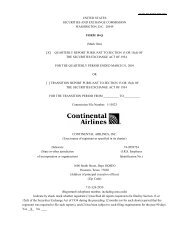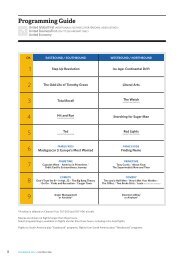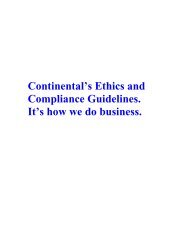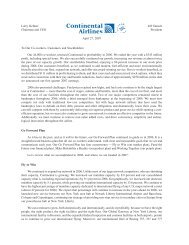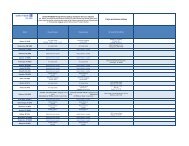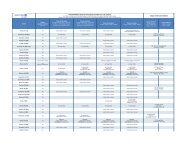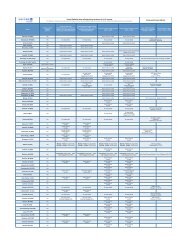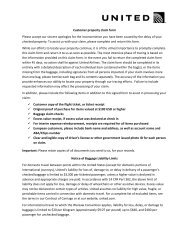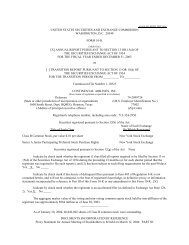ACAA Final Rule.pdf - United Airlines
ACAA Final Rule.pdf - United Airlines
ACAA Final Rule.pdf - United Airlines
You also want an ePaper? Increase the reach of your titles
YUMPU automatically turns print PDFs into web optimized ePapers that Google loves.
37<br />
operating the flight for information about its requirements for use of such devices in the cabin, or provide such<br />
information on behalf of the codeshare carrier operating the flight.<br />
(f)(1) As a U.S. or foreign carrier subject to paragraph (a) or (b) of this section, you must inform any individual who<br />
has advised you that he or she plans to operate his/her device in the aircraft cabin, within 48 hours of his/her making<br />
a reservation or 24 hours before the scheduled departure date of his/her flight, whichever date is earlier, of the<br />
expected maximum flight duration of each segment of his/her flight itinerary.<br />
(2) You may require an individual to bring an adequate number of fully charged batteries onboard, based on the<br />
battery manufacturer’s estimate of the hours of battery life while the device is in use and the information provided in<br />
the physician’s statement, to power the device for not less than 150% of the expected maximum flight duration.<br />
(3) If an individual does not comply with the conditions for acceptance of a medical portable electronic device as<br />
outlined in this section, you may deny boarding to the individual in accordance with 14 CFR 382.19(c) and in that<br />
event you must provide a written explanation to the individual in accordance with 14 CFR 382.19(d).<br />
Subpart J - Training and Administrative Provisions<br />
§382.141 What training are carriers required to provide for their personnel?<br />
(a) As a carrier that operates aircraft with 19 or more passenger seats, you must provide training, meeting the<br />
requirements of this paragraph, for all personnel who deal with the traveling public, as appropriate to the duties of<br />
each employee.<br />
(1) You must ensure training to proficiency concerning:<br />
(i) The requirements of this Part and other applicable Federal regulations affecting the provision of air travel to<br />
passengers with a disability;<br />
(ii) Your procedures, consistent with this Part, concerning the provision of air travel to passengers with a disability,<br />
including the proper and safe operation of any equipment used to accommodate passengers with a disability; and<br />
(iii) For those personnel involved in providing boarding and deplaning assistance, the use of the boarding and<br />
deplaning assistance equipment used by the carrier and appropriate boarding and deplaning assistance procedures<br />
that safeguard the safety and dignity of passengers.<br />
(2) You must also train such employees with respect to awareness and appropriate responses to passengers with a<br />
disability, including persons with physical, sensory, mental, and emotional disabilities, including how to distinguish<br />
among the differing abilities of individuals with a disability.<br />
(3) You must also train these employees to recognize requests for communication accommodation from individuals<br />
whose hearing or vision is impaired and to use the most common methods for communicating with these individuals<br />
that are readily available, such as writing notes or taking care to enunciate clearly, for example. Training in sign<br />
language is not required. You must also train these employees to recognize requests for communication<br />
accommodation from deaf-blind passengers and to use established means of communicating with these passengers<br />
when they are available, such as passing out Braille cards if you have them, reading an information sheet that a<br />
passenger provides, or communicating with a passenger through an interpreter, for example.<br />
(4) You must consult with organizations representing persons with disabilities in your home country when<br />
developing your training program and your policies and procedures. If such organizations are not available in your<br />
home country, you must consult with individuals with disabilities and/or international organizations representing<br />
individuals with disabilities.



